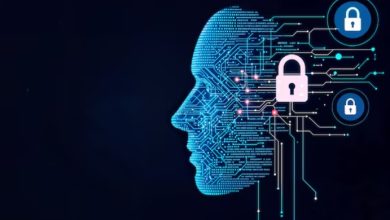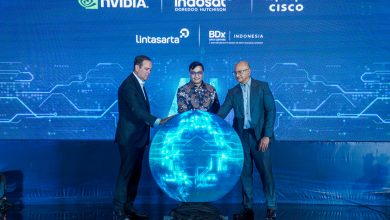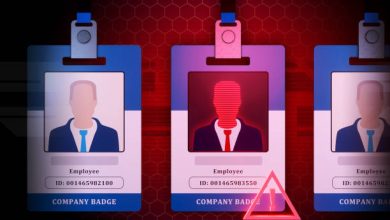The Race to Secure Your Data: Quantum Computing and Beyond

Written by: Khairul Haqeem, Journalist, AOPG.

As the technological landscape shifts, so too does the difficulty of ensuring the security of our information. Quantum computing is a major concern since it might theoretically crack our existing encryption technologies in minutes instead of years. James Cook, Vice President of Sales for APAC, Entrust and I had a lengthy conversation about this matter.
For Cook, the moment to act is now, not in the years to come when quantum computing will become commonplace. In order to mitigate the dangers posed by quantum computing, Entrust has spent a great deal of time and energy researching the topic and developing countermeasures. Cook suggests checking out Entrust’s website and filling out their post-quantum preparation questionnaire if you’re worried about the threat of quantum computing.
Quantum Leaps in Security: The Race to Stay Ahead
As technology advances, so do the tactics of those seeking to exploit it. The ongoing battle between hackers and security experts is a game of cat and mouse, with each side constantly trying to outsmart the other. But in recent years, a new player has emerged in the field of cybersecurity: Quantum computing.
The potential of quantum computing to crack even the most complex encryption codes has led to a frenzy of research and development in the industry. As Cook explains, “Quantum computing has the potential to be a game-changer in the world of cybersecurity. It can break traditional encryption methods in a matter of seconds.”
Security researchers are working feverishly to create quantum-safe encryption solutions. Playing at this level puts the safety of our entire digital ecosystem at risk. As Cook explained, “NIST is leading the lights here, and we have built candidate post-quantum safe algorithms. This means that organisations like Entrust can start building post-quantum capability within our products. The problem is not insurmountable. We have created new, quantum-resistant encryption algorithms that are as powerful as, if not stronger than, the old ones.”
It’s always a race to remain one step ahead of hackers but with the advent of quantum computers, the stakes are far greater than they’ve ever been. “Cybersecurity is a field where ongoing innovation and adaptability are essential to making progress. It would be foolish to get complacent; doing so would leave our digital world open to assault and put us at a significant disadvantage.”
Cook notes the timeline for quantum computing to become a reality is becoming clearer, with some experts predicting it could happen within the next five to ten years. In Cook’s words, “The key message that we give to people is that any sooner rather than later so the time to take action is now.”
Entrust-ing the Future of Security to Decentralised Identities
Speaking of emerging trends in the cybersecurity space, Cook also mentioned Decentralised Identities, or DIDs, as an emerging area that is gaining a lot of traction among many organisations. Essentially, the pain point is our digital identities are at risk with traditional centralised identity management systems, which lack sufficient security and privacy. Federated identification systems may solve some issues but also introduce new complications. Decentralised identity technology, offered by Web3, allows users to manage their own identity and store data locally on their devices for increased security. It also enables users to utilise a unified set of credentials across multiple online services without disclosing personal information, providing better privacy control. This way, individuals can have more control over their personal information and experience less friction when using a decentralised identity defence system.
Despite the fact that DIDs are still in their infancy, Entrust and other market players are devoting considerable resources to the topic. It is proposed that one’s identity be kept in a digital wallet, which provides a safe, decentralised location from which to handle and access private data.
Both internet access and identity security, as Cook points out, are trending towards decentralisation. Together, these two developments may provide a formidable barrier against the rising danger of online fraud and identity theft.
Without a doubt, decentralised identities are something to keep an eye on as technology develops further.
Balancing Security and Convenience in the Digital Age
The age-old compromise between security and convenience still reigns supreme when it comes to digital security. Although safety is of paramount importance, consumers also place a high value on the ease with which tasks may be completed. IT businesses always face the difficulty of striking a balance between the two but doing so is what separates the greatest from the others.
According to Cook, the trick is to offer security options that are also easy to use. When users have a positive experience, they are more likely to accept the technology and use it to keep themselves safe.
When it comes to protecting sensitive information online, there is, of course, no single solution. Every time there’s a breakthrough in the industry, hackers come up with a countermeasure to exploit its weaknesses. But, the IT sector can remain ahead of the curve and keep customers safe by prioritising user experience alongside security measures.
Biometric authentication, strong encryption, and artificial intelligence-powered threat detection are the future of cybersecurity, in Cook’s opinion. The greatest possible levels of security may be provided by these systems without affecting user experience. This equilibrium is crucial now and will be much more so as our global society grows more dependent on digital technology.
In the end, it’s all about striking the right balance between security and convenience. As James Cook says, “If you can get that balance right, you’ve truly unlocked the power of digital security.”
Cybersecurity in the C-Suite
Are companies doing enough to protect their sensitive information? According to Cook, citing a recent report from Gartner, “less than 10% of organisation company boards at the moment have a dedicated cybersecurity committee that’s overseen by qualified board members. That tells me that security is not getting the senior-level attention that it deserves.”
The solution, Cook believes, is to prioritise cybersecurity at the highest levels of company leadership. “We need cybersecurity representation at the board level,” he says. “And ideally, large organisations should develop a cybersecurity committee with qualified board members and C-suite membership and involvement.”
By placing cybersecurity at the forefront of decision-making, companies can ensure that their digital identity management systems are resilient in the face of ever-evolving threats. As Cook notes, “Moving security up the list of priorities and making it a genuine C-level issue is what will make a difference moving forward.”
Everyone has an obvious part to play in determining the fate of cybersecurity in the future. The only way for businesses to defend themselves and their customers from the ever-increasing frequency and severity of cyber assaults is to take the counsel of experts like Cook and put cybersecurity at the centre of their decision-making.




